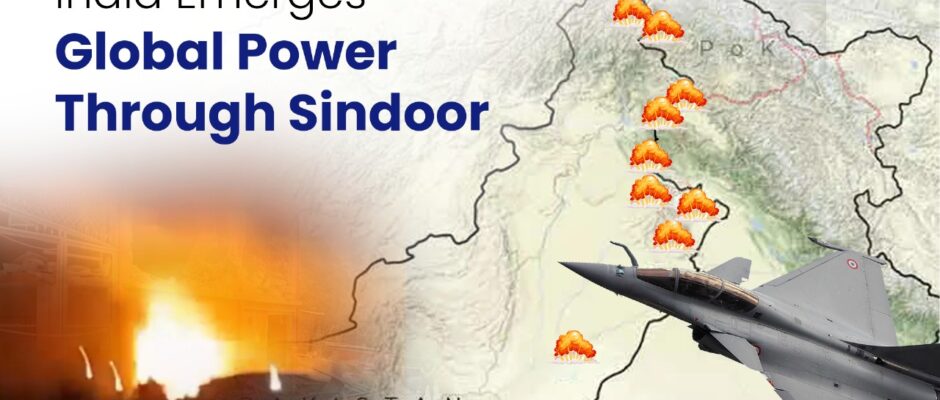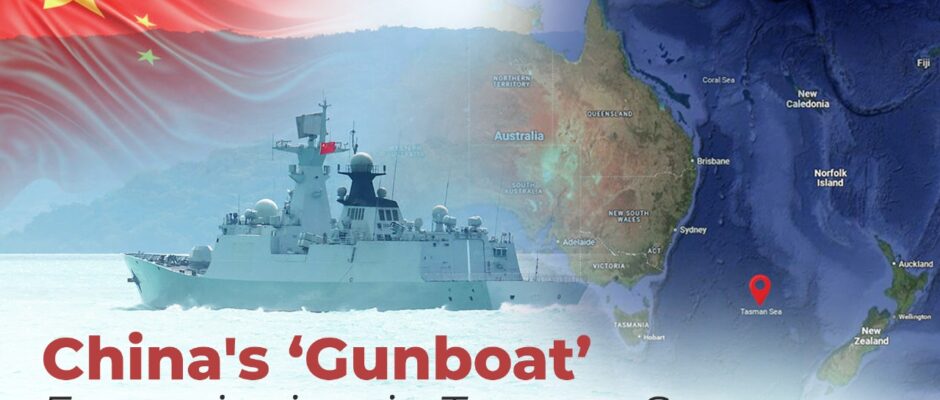
Lions, Shadows & Silk Roads
Israel-Iran clash reshaped West Asia’s strategic chessboard with US getting in. India will have to display maturity, dexterity, openness and exercise its strategic autonomy. N. C. Bipindra The Middle East was thrust into dramatic escalation of hostilities as Israel launched “Operation Rising Lion,” a comprehensive preemptive military campaign against Iranian targets, taking out military and nuclear facilities, on June 13, 2025. The operation, which included airstrikes, cyber-attacks and targeted assassinations was Israel’s most extensive cross-border military endeavour in recent years. In response, Iran activated proxy militias, launched missile attacks via Islamic Revolutionary Guard Corps (IRGC) and escalated its hybrid warfare tactics across the region. After calling for asking Iran to surrender, US President Donald Trump approved American air strikes completely obliterating three key Iranian nuclear facilities at Natanz, Fordow and Isfahan, yet noting “now is the time for peace.” This confrontation has far-reaching implications for regional stability, global oil markets, US foreign policy and emerging trade corridors like India-Middle East-Europe Economic Corridor (IMEC) and India-Isreal-UAE-USA (I2U2) group. For India, which has been investing heavily in regional diplomacy and infrastructure partnerships such as IMEC and I2U2, the conflict raises urgent questions about risk, resilience and realignment in its West Asia strategy. Operation Rising Lion, Israel’s Gambit Israel’s Operation Rising Lion was triggered by a surge in Iranian backed attacks on Israeli diplomatic and economic interests in northern Iraq, Syria and transfer of precision-guided missiles to Hezbollah in Lebanon apart from repeated calls for use of nukes to annihilate Israelis. The operation marked a shift in Israel’s longstanding “campaign between the wars” doctrine into an open and assertive military campaign targeting Iranian infrastructure, weapons convoys and senior commanders in multiple theatres. Key components of the operation included coordinated airstrikes on IRGC installations, targeted killing of senior operatives, military leadership and taking out nuclear facilities. The operation included cyber strikes and group covert attacks that disrupted Iranian air defence networks, missile stations and fuel supply chains. Anticipating a counterstrike from Iran, Israel deployed its new laser-based missile defence system which had been tested successfully against Iranian cruise missile barrages. Most of the Iranian attacks were intercepted though some have penetrated the air defence system to hit Israeli cities and towns including a hospital complex. Israel declared the operation a strategic necessity to “decapitate Iran’s regional encirclement architecture” and pre-empt future multi-front attacks including the nukes. While tactically effective, it has risked triggering a full-scale war with Iran and its axis of resistance apart from getting US and Russia-China involved in the war. Iran’s Proxy Retaliation, Strategic Posturing Iran’s counter-response blended military retaliation, strategic ambiguity, and proxy warfare. Apart from direct state-to-state confrontation with Israel — still a risky escalation — Iran relied heavily on asymmetric tactics. Iran fired hundreds of drones and rockets into Israel, overwhelming Iron Dome systems despite Israeli air superiority. The Houthis, an Iranian proxy in Yemen, have dubbed the US strikes on Iran as a “declaration of war” and have fired several missiles at Israel. Iran’s missile strike on Israel marked the first direct hit from Iranian territory since the April 2024 skirmish, indicating a new threshold of confrontation. Though Iran is trying to avoid full-scale war, its response is carefully calibrated to bleed Israel politically and militarily, while also testing the resolve of US deterrence commitments in the region. US Strategic Overstretch? The US was quickly pulled into the maelstrom, just over a week into the launch of military hostilities. Though Trump only issued warnings for a week, providing intelligence support to Israel and deploying at least two aircraft carriers to the region, his administration seems to have decided that enough is enough. Washington now faces accusations of strategic inconsistency. While it pushed for de-escalation publicly, on the parallel it supported Israeli operational aims covertly. This dualism will further strain US ties with Gulf States like Oman and Kuwait who fear further regional de-stabilisation. Furthermore, as tensions peaked, Trump administration’s G7 engagement was interrupted, which complicates America’s long-term global balancing act. Disruptions, Opportunity for India India has deep economic, energy and strategic stakes in West Asia. Operation Rising Lion and its aftermath present both direct threats and unexpected opportunities for New Delhi. IMEC Corridor in Jeopardy: The IMEC, announced at the 2023 G20 Summit, depends on regional stability across UAE, Saudi Arabia, Israel, and Jordan. The Israel-Iran conflict has disrupted port operations in Haifa and Eilat, key to IMEC’s Mediterranean leg. It has jeopardised land connectivity across Jordan due to increased Israeli military mobilisation. The insurance premiums on Red Sea maritime routes are expected to spike by about 35 per cent hurting Indian exporters. While not dead, IMEC’s viability is now under serious question until a ceasefire or détente is re-established. I2U2 Faces Diplomatic Strain: The I2U2 grouping aimed at high-tech cooperation, food security and infrastructure investment now faces political turbulence. UAE, a key I2U2 pillar, is deeply wary of regional conflict spilling over and has called for restraint putting it at odds with Israel’s aggressive posture. India is caught between maintaining its longstanding ties with Israel and its desire to deepen linkages with Iran, UAE and the Arab world, especially after recent Chabahar Port developments. India’s diplomatic tightrope is getting narrower. Energy Security and Diaspora Risks: Iran’s retaliation threatens commercial shipping in the Strait of Hormuz if India is seen backing Israel. While largely rhetorical, these threats would increase Brent crude prices beyond current rates, putting India’s inflation control at risk. There is heightened concern on nine million-strong Indian diaspora in the Gulf, as militias near Kuwait and Bahrain showed signs of mobilisation. India has had to yet again evacuate her citizens from Iran, Israel and the spill over of the conflict to other States in the region would compound the evacuation tasks on hand. Strategic Recommendations for India In navigating the evolving West Asian crisis, India must pursue a multi-vector strategy. It must reinvigorate strategic neutrality. India must avoid taking sides publicly while conducting quiet shuttle diplomacy between Israel, Iran and Gulf countries. A role in









